Why You’ll Love Making Batik Art In Yogyakarta, Indonesia
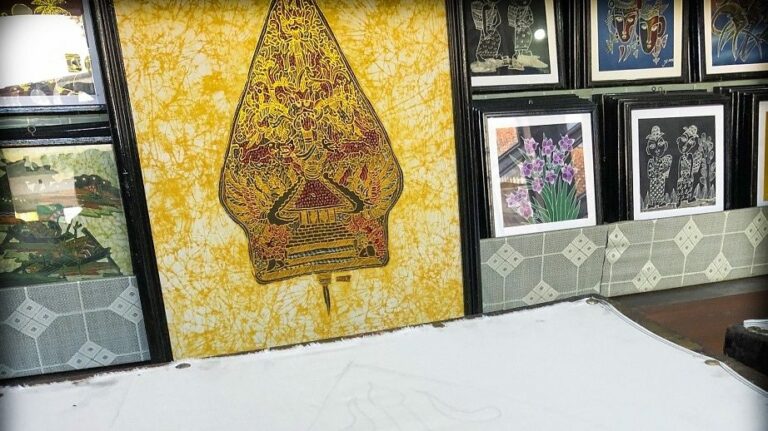
Indonesia is full of amazing cultural traditions! From batik art to gamelan music, this country is a wealth of artistic traditions.
We are enjoying our experiences so much here in Indonesia, I hardly have time to share about them. But one of the things I do want to share is our immersion into Indonesian culture last month, making batik print in Yogyakarta, a city on the island of Java.
I have always wanted to make batik art. The intricate patterns and designs are so beautiful and unique, and the process of making batik print is absolutely interesting. While we were in Yogyakarta, we took advantage of two opportunities to learn about and practice this form of Indonesian art.
This post was updated on February 25, 2020.
This post may contain affiliate links. That means I may receive a small commission if you click on the link and purchase something. But don't worry, this will not result in any extra costs to you.
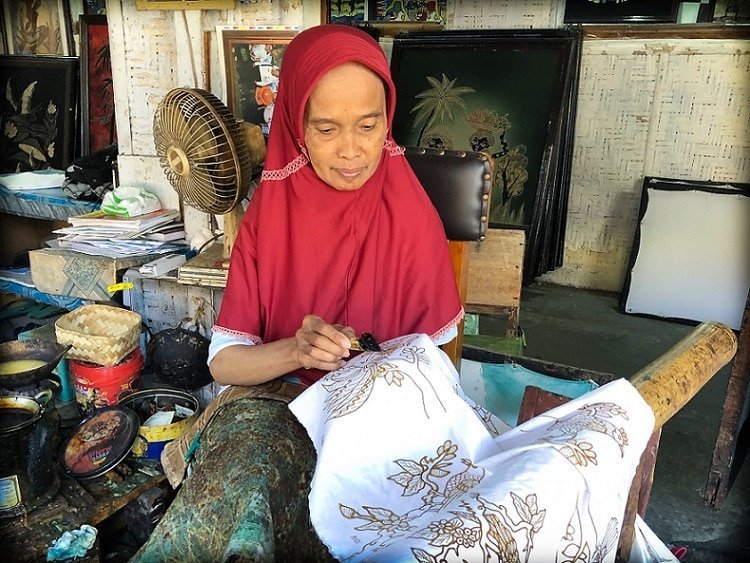
Evolution of batik art
The origins of batik art actually stem from Egyptian and Chinese traditions of wax-resist dyeing. Even India and Japan had their own form of wax-resist dyeing. Indonesia most likely acquired its batik traditions from trade with India and Sri Lanka in the 6th or 7th century.
Since then, this Indonesian art form has flourished into the refined art form that you see today. Many of the ethnic groups throughout Indonesia have their form of batik fabric. And Indonesian batik art even has the distinction of being a UNESCO “Masterpiece of Oral and Intangible Heritage of Humanity.”
Even the colorful and bold wax prints you find throughout Sub-Saharan Africa have their roots in Indonesian batik art. In the 19th century, Dutch textile companies introduced their own version of batik print to the African continent, modeled after Indonesian batik art. Centuries later, Dutch wax prints are a large part of African modern culture and art.
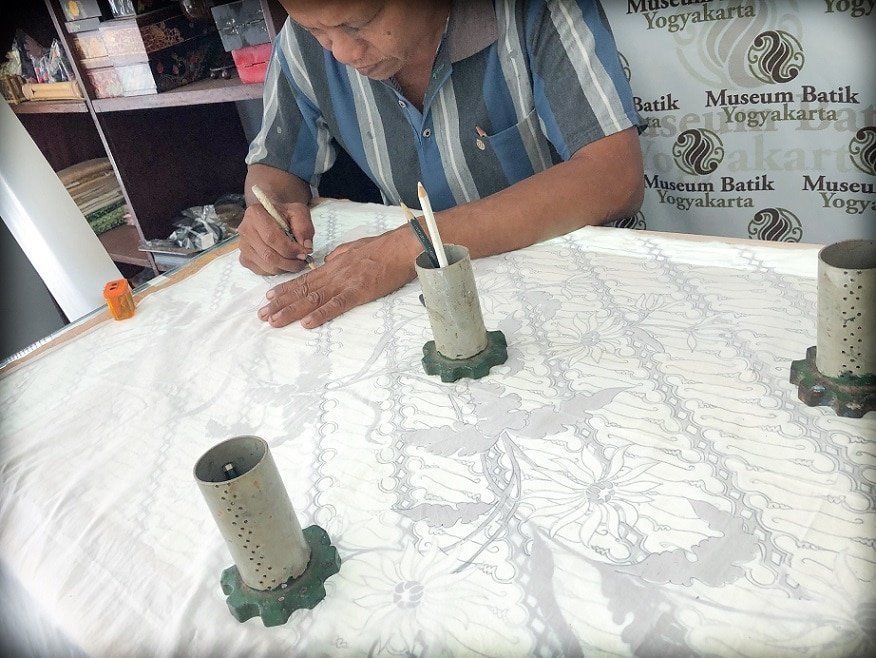
Batik print in Indonesia
Within Indonesia, batik print plays an important role in culture. In Java, specific designs and patterns are used on special occasions, like births or marriages. Occasionally, some motifs are designated as only to be used by royalty. The book, Batik: Fabled Cloth of Java, covers many of the histories and influences surrounding batik over the years.
On the island of Java, the traditional colors of batik print are blue, brown, and white. As various ethnic groups put their own influences on the patterns and colors, batik prints in Indonesia began to be more colorful and varied.
Today, batik art is a source of national pride among Indonesians, who still wear batik on many occasions. And the traditions surrounding the creation of this form of Indonesian art are still practiced on a daily basis.
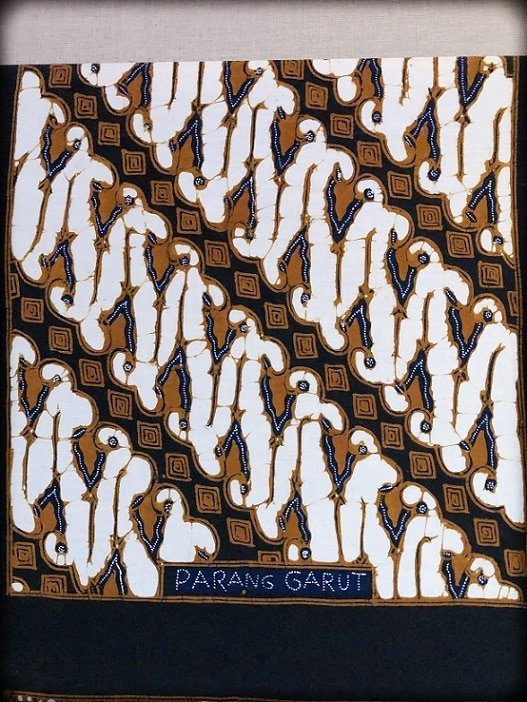
The batik making process
Perhaps one of the reasons why I’ve always been fascinated by batik art is because of the complexity of the batik making process. While we were in Yogyakarta, we had a chance to take two lessons in batik, and were able to go through the batik making process.
In Indonesia, traditional batik artists use a tool called a canting, which acts as a pen to “draw” wax designs onto the fabric. For mass production, artists may also use a metal stamp, called a cap, that’s dipped in wax before it’s pressed onto the fabric.
During our batik making classes, I tried my hand at drawing a few traditional designs, like a bird, or a shadow puppet. But my husband and daughter were more creative, creating their own original designs.
After the wax is printed, dye is added to the fabric. Sometimes another layer of wax is added to the dyed fabric, before being dyed another color, to add more depth in the design. Once the fabric is dyed, it’s dipped into boiling water to release the wax, and then hung to dry.
We had so much fun creating our own batik art! Even my youngest son was interested in learning about the process.
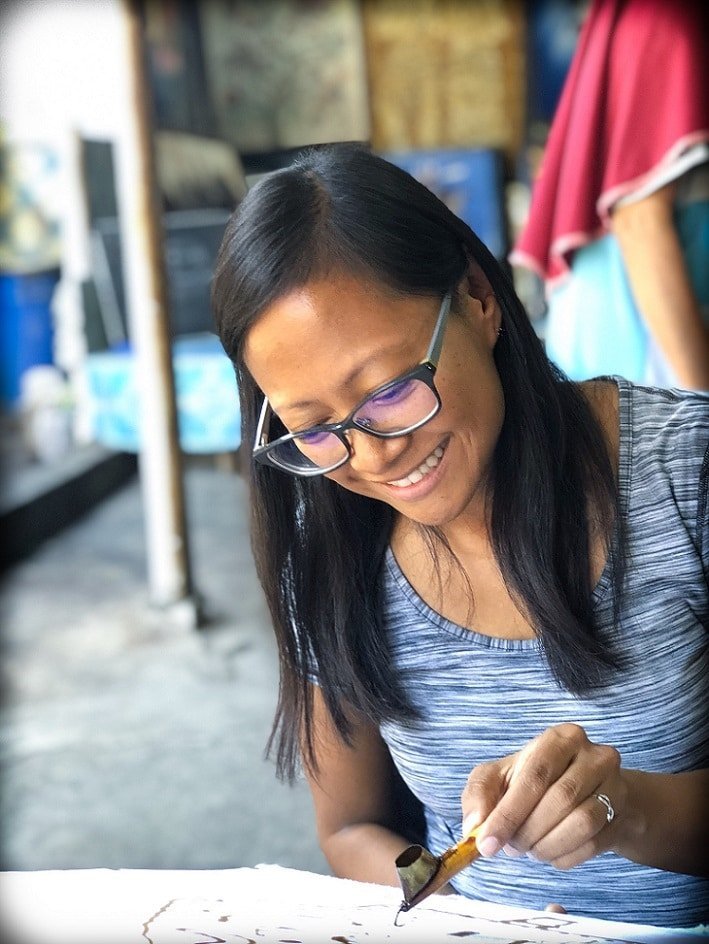
Where to learn batik art for families in Yogyakarta
There are plenty of places to learn about making batik print in the city of Yogyakarta. Many of the batik art galleries also offer batik making classes. You can also go through cultural centers or museums to learn how to make batik prints. Here are a few of our favorites.
Batik Seno
Our favorite place was Batik Seno, located just off of Jalan Tirtodipuran. They offer one on one batik making classes for Rp. 300,000 (roughly $21) per person. The class is three hours long, and you create one piece of batik art about 24 x 24 inches.
Museum Batik
Another place to learn about batik is at the Museum Batik. You can learn how to make batik art for Rp. 80,000-95,000 (roughly $5-7) per person, depending on the color. For Rp. 125,000 (around $9), you can create three pieces of batik. The pieces are around 18 x 18 inches in size.
Taman Pintar
Taman Pintar, the children’s museum in Yogyakarta, also offers batik lessons for Rp. 18,000 (less than $2) per person. These lessons are geared towards kids, so the technique is much more simplified, and the fabric is small, roughly 10 x 10 inches. But if you’re interested in a general introduction to Indonesian art, and your kids are fairly young, this may be a good place to start.
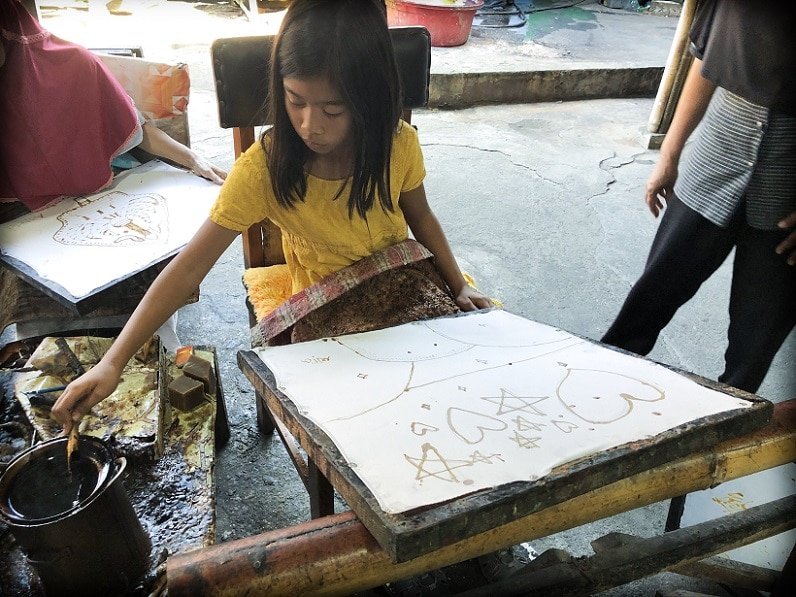
Why an Indonesian batik art experience is perfect for families
Whenever I travel, I’m always looking for educational opportunities for my kids. Making batik art in Yogyakarta was a great way for my kids to learn about Indonesian art, and experience a special part of Indonesian culture.
Taking the classes were also a wonderful way to create some meaningful souvenirs from our trip. In total, we created ten pieces of batik art, which we can now frame and hang in our home when we return from our trip. It’s such a unique way to remember our trip.
More important, taking a batik print class is a way to help Indonesians maintain their cultural traditions. By sharing and teaching these traditions to others, batik artists are helping to make these traditions relevant for the younger generation.
Have you had a chance to do batik art? What was your experience like? Share it in the comments below!
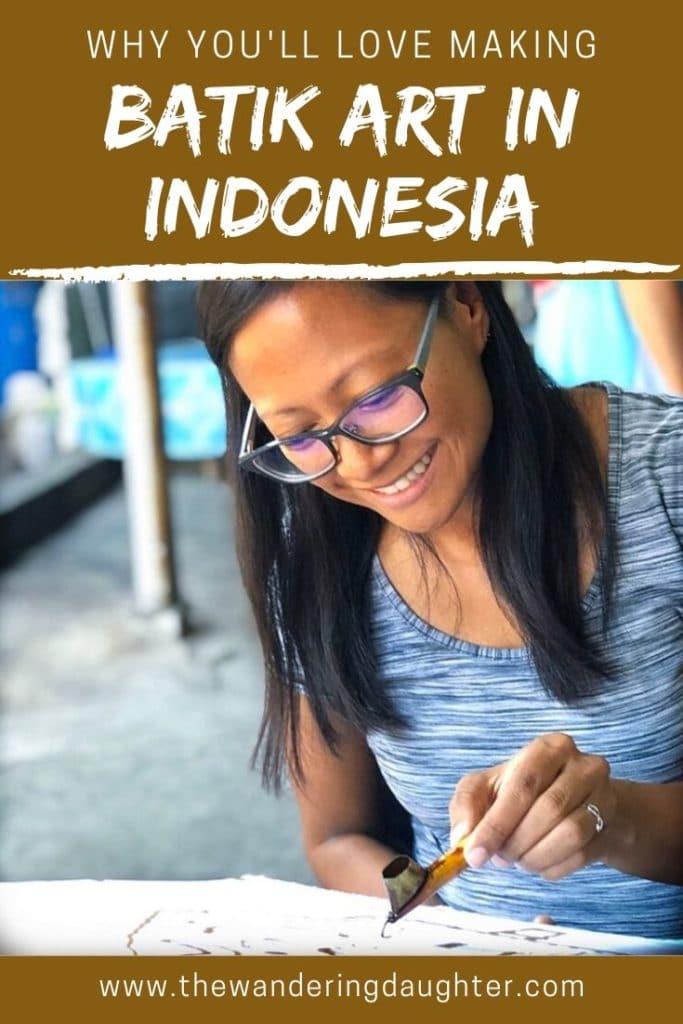
Need help thinking through how to budget for a family trip? My Travel Budget Worksheet is just the tool you need! Click here to receive your free copy by signing up for my newsletter.
Want to connect with me on social media? Find me on Facebook, Instagram, Pinterest, and Twitter. And for those of you who are dedicated to traveling more responsibly, sustainably, and ethically, join over 500 like-minded families on my Facebook group, Responsible Family Travel.






